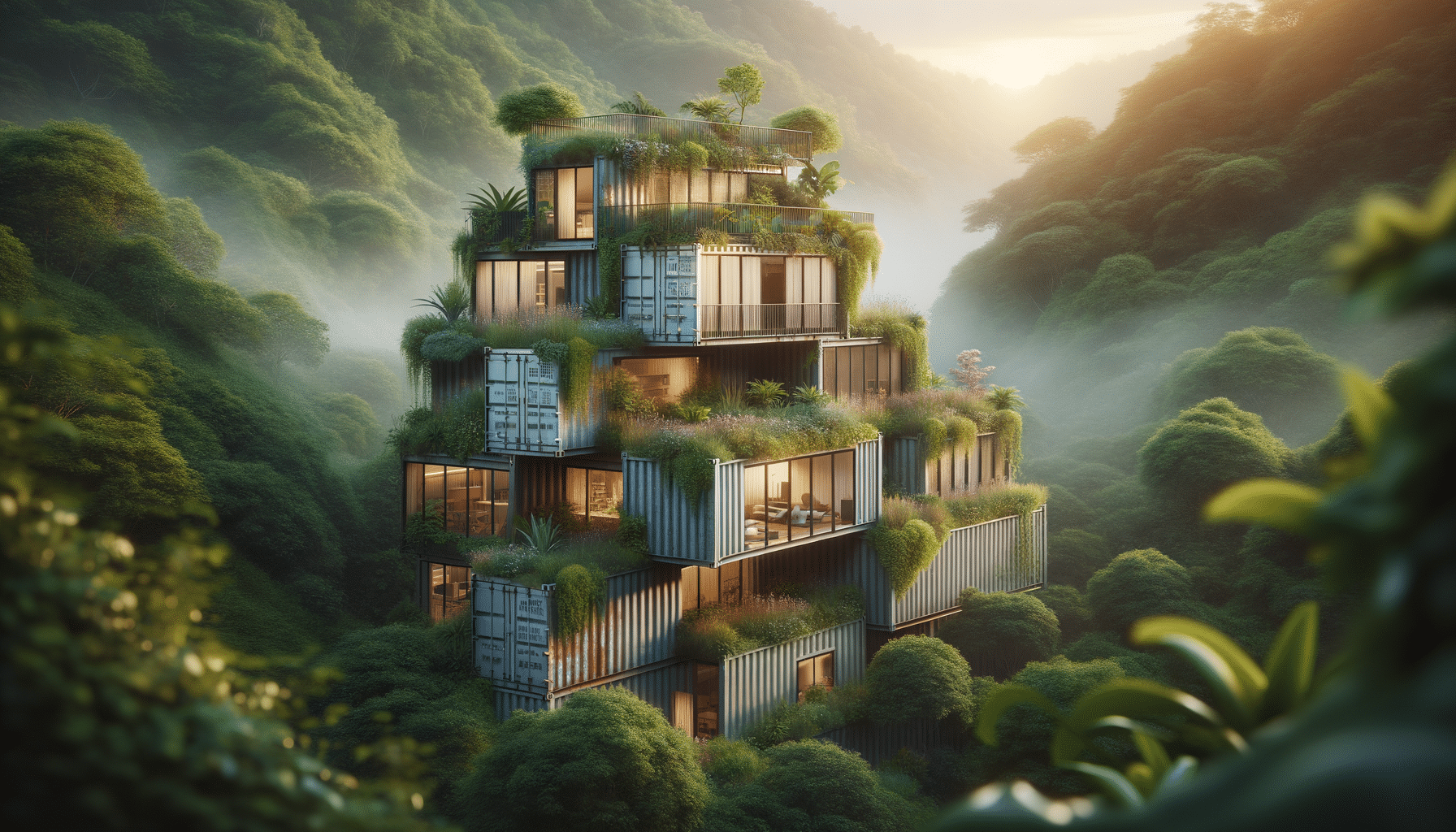
Exploring the World of Container Homes: Innovative Living Solutions
Introduction to Container Homes
In recent years, container homes have emerged as a unique and innovative solution for sustainable living. These structures, crafted from repurposed shipping containers, offer an alternative to traditional housing. Container homes are gaining popularity due to their versatility, cost-effectiveness, and eco-friendly nature. As urbanization continues to rise, the need for sustainable housing solutions becomes even more pressing. Container homes provide an opportunity to meet this demand while minimizing environmental impact.
One of the most appealing aspects of container homes is their adaptability. These steel structures can be transformed into comfortable and functional living spaces, suitable for various climates and terrains. The concept of using shipping containers for residential purposes is not entirely new, but it has gained momentum as more people seek affordable and sustainable living options. In this article, we will delve into the benefits, challenges, and future prospects of container homes.
Benefits of Container Homes
Container homes offer a multitude of advantages that appeal to environmentally conscious individuals and budget-savvy homeowners alike. One of the primary benefits is sustainability. By repurposing shipping containers, we reduce the demand for new building materials, consequently lowering the carbon footprint associated with construction. Additionally, the modular nature of container homes allows for efficient use of space and resources.
Another significant advantage is cost-effectiveness. Building a container home can be more affordable than constructing a traditional house, as the basic structure is already in place. This affordability extends to maintenance costs as well, as the steel frames are durable and require minimal upkeep. Furthermore, container homes can be constructed quickly, reducing labor costs and allowing homeowners to move in sooner.
Container homes also offer flexibility in design. Homeowners can customize their living space to suit their needs, whether it’s a compact urban dwelling or a sprawling countryside retreat. The ability to stack and arrange containers in various configurations offers endless design possibilities. This adaptability makes container homes an attractive option for those seeking a personalized and unique living environment.
Challenges of Container Homes
Despite their numerous benefits, container homes do present some challenges that potential homeowners should be aware of. One of the primary concerns is insulation. Shipping containers are made of steel, which can make them susceptible to temperature fluctuations. Proper insulation is crucial to ensure a comfortable living environment, and this can add to the overall cost of the project.
Another challenge is zoning and building regulations. While container homes are gaining acceptance, they may not be permitted in all areas. Homeowners must navigate local building codes and zoning laws, which can vary significantly from one region to another. It’s essential to research and understand these regulations before embarking on a container home project.
Additionally, structural modifications may be necessary to accommodate plumbing, electrical, and other essential systems. These modifications require expertise and can increase the complexity of the build. Despite these challenges, many homeowners find that the benefits of container homes outweigh the potential drawbacks, especially with careful planning and consideration.
Design Innovations in Container Homes
The world of container homes is constantly evolving, with architects and designers pushing the boundaries of what can be achieved with these versatile structures. Innovative design solutions have made container homes more appealing and functional than ever before. One such innovation is the use of green roofs and walls, which enhance the aesthetic appeal while providing insulation and reducing energy consumption.
Another design trend is the incorporation of large windows and sliding glass doors, which maximize natural light and create a seamless connection between indoor and outdoor spaces. This design approach not only improves the living experience but also contributes to energy efficiency by reducing the need for artificial lighting.
Smart home technology is also making its way into container homes, offering convenience and efficiency. Homeowners can now integrate automated systems for lighting, heating, and security, making container homes as advanced as traditional houses. These design innovations demonstrate the potential of container homes to provide modern, comfortable, and sustainable living environments.
The Future of Container Homes
As the demand for sustainable and affordable housing solutions continues to grow, the future of container homes looks promising. With advancements in construction technology and design, container homes are becoming more accessible and appealing to a broader audience. These homes offer a practical solution to housing shortages and can be used in various applications, from single-family homes to multi-unit developments.
Moreover, container homes are gaining recognition in the realm of disaster relief housing. Their durability and ease of transport make them ideal for providing temporary shelter in areas affected by natural disasters. This application highlights the versatility of container homes and their potential to address pressing global issues.
In conclusion, container homes represent a forward-thinking approach to housing that aligns with the principles of sustainability and innovation. As more people embrace this concept, we can expect to see continued growth and development in the container home industry. Whether for personal use or broader applications, container homes offer a glimpse into the future of sustainable living.


